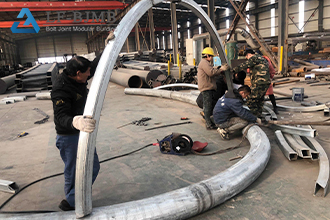Requirements for weld seams may vary in some respects from country to country around the world, depending mainly on national regulations, standards, and the requirements of the particular project. The following are some of the factors that may lead to differences:

Codes and standards: Different countries or regions may have different codes and standards, which may specify requirements for weld quality, weld processes, weld inspection methods, etc.
Project Requirements: The requirements for welding quality and weld seams may vary from one type of project to another. For example, some important infrastructure projects may have higher welding quality requirements, while some civil construction projects may have lower welding quality requirements.
Culture and tradition: Some countries or regions may have their own welding culture and tradition, which may affect their views and requirements on welding quality and technology.
In China, for example, the Chinese national standards for welds are mainly set by the Chinese National Standards, including the Quality Assessment of Welded Joints (GB/T 11345), which is the main standard used to assess the quality of welded joints in the Chinese welding industry. In addition, China also refers to relevant standards of the International Standards Organization (ISO), such as ISO 5817 “Welding of metallic materials – Quality assessment of welded seams”.
The standard “Quality Assessment of Welding Seams” (GB/T 11345) covers the requirements for assessing the appearance, size, geometry, and defects of welding seams, as well as guidance on the quality assessment of various welding methods. These standards play a key role in ensuring the quality of welding and improving the quality and safety of projects and are widely used in the welding industry in China.
Despite some differences, in today’s globalized world, many countries are striving to achieve uniformity and mutual recognition of welding quality through the adoption of international standards and mutually recognized qualification systems. Therefore, in most cases, the basic requirements for welds may be similar in countries around the world, but there may be some differences in specific details.











 About Us
About Us 2024-04-29
2024-04-29


